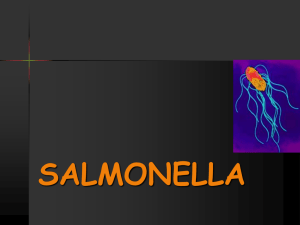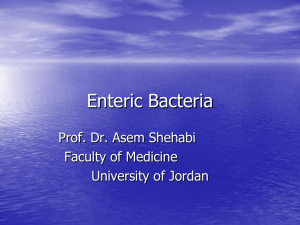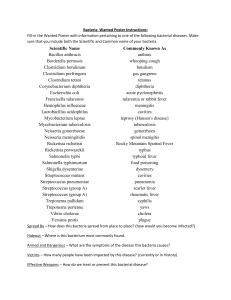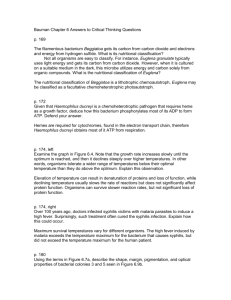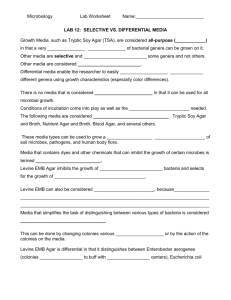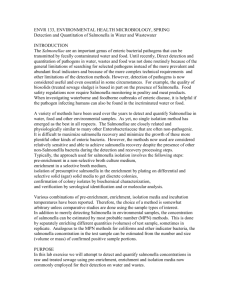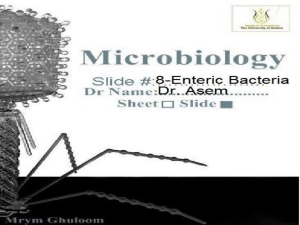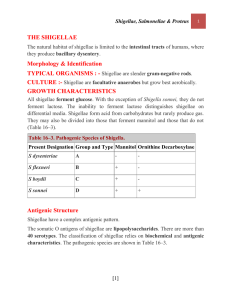Family
advertisement
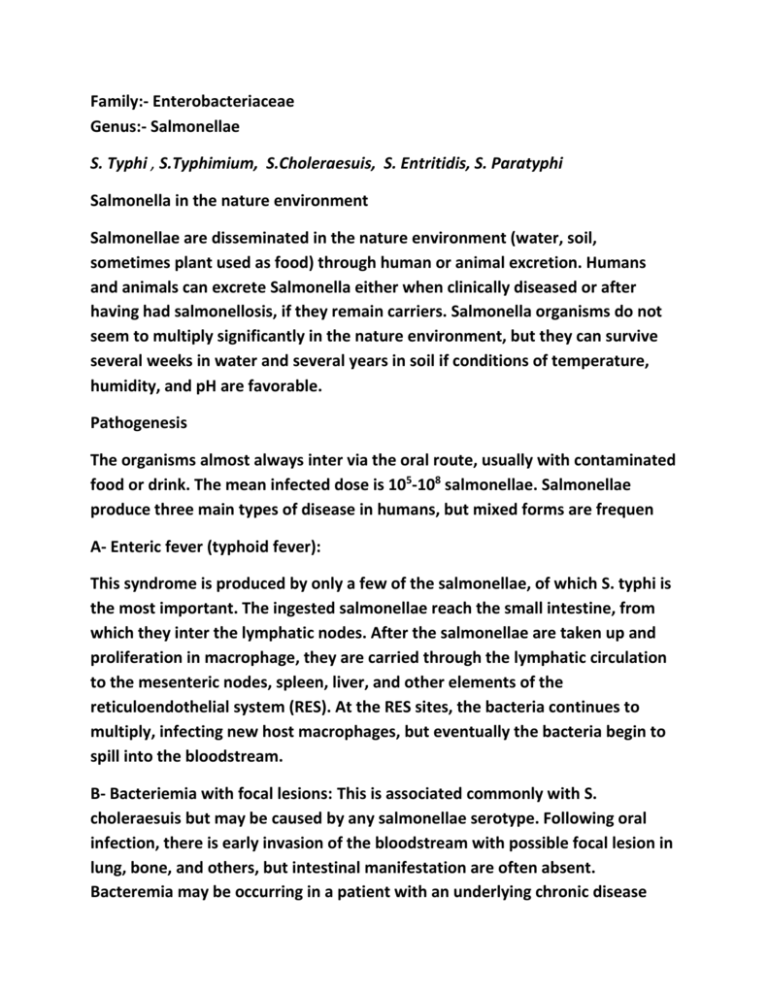
Family:- Enterobacteriaceae Genus:- Salmonellae S. Typhi , S.Typhimium, S.Choleraesuis, S. Entritidis, S. Paratyphi Salmonella in the nature environment Salmonellae are disseminated in the nature environment (water, soil, sometimes plant used as food) through human or animal excretion. Humans and animals can excrete Salmonella either when clinically diseased or after having had salmonellosis, if they remain carriers. Salmonella organisms do not seem to multiply significantly in the nature environment, but they can survive several weeks in water and several years in soil if conditions of temperature, humidity, and pH are favorable. Pathogenesis The organisms almost always inter via the oral route, usually with contaminated food or drink. The mean infected dose is 105-108 salmonellae. Salmonellae produce three main types of disease in humans, but mixed forms are frequen A- Enteric fever (typhoid fever): This syndrome is produced by only a few of the salmonellae, of which S. typhi is the most important. The ingested salmonellae reach the small intestine, from which they inter the lymphatic nodes. After the salmonellae are taken up and proliferation in macrophage, they are carried through the lymphatic circulation to the mesenteric nodes, spleen, liver, and other elements of the reticuloendothelial system (RES). At the RES sites, the bacteria continues to multiply, infecting new host macrophages, but eventually the bacteria begin to spill into the bloodstream. B- Bacteriemia with focal lesions: This is associated commonly with S. choleraesuis but may be caused by any salmonellae serotype. Following oral infection, there is early invasion of the bloodstream with possible focal lesion in lung, bone, and others, but intestinal manifestation are often absent. Bacteremia may be occurring in a patient with an underlying chronic disease such as sickle cell anemia or cancer. This seeding of bacteria and their LPS endotoxin, starts the fever, which increases and persists with the continuing bacteremia. Spread to the biliary tree leads to reinfection of the bowel. This cycle beginning and ending in the small intestine takes approximately 2 weeks to complete. Invasion of the gallbladder can result in establishment of the carrier state and excretion of the bacteria in the feces for long periods C- Enterocolitis (Gastroenteritis): Morphology and identification: Salmonella are Gram-negative bacteria, non sporing, non capsulated, bacilli, Most species are motile by peritrichous flagella. Lactose non ferment and they usually produce H2S Cultural Characteristic Salmonella are aerobes and facultative anaerobes growing within range of 15-45 C , colonies on N.A. agar or blood agar are 2-3 mm in diameter, greywhite, circular, moist, convex & translucent , on MacConkey, colonies are pale yellow or colorless, on SS agar colorless with black centers Laboratory diagnosis: A- Specimens: In enteric fever and septicemia, blood cultures are positive in the first week of the disease. Urine culture may be positive after second week. The stool yield positive results after second week. In enterocolitis, the stool yield positive result during the first week. B- Culture. Blood agar, MacConkey, XLD agar,SS agar C- Biochemical test. D- Serological test. E- Widal test.
